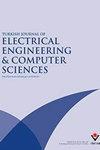Multiscanning mode laser scanning confocal microscopy system
IF 1.5
4区 计算机科学
Q4 COMPUTER SCIENCE, ARTIFICIAL INTELLIGENCE
Turkish Journal of Electrical Engineering and Computer Sciences
Pub Date : 2019-04-01
DOI:10.3906/ELK-1807-268
引用次数: 2
Abstract
In this paper, a table-top, reflective mode, laser scanning confocal microscopy system that is capable of scanning the target specimen alternately through various scanning devices and methods is proposed. We have developed a laser scanning confocal microscopy system to utilize combinations of various scanning devices and methods and to be able to characterize the optical performance of different scanners and micromirrors that are frequently used in scanning microscopy systems such as multiphoton microscopy, optical coherence tomography, or confocal microscopy. By integrating the scanner to be characterized on the same optical path with a galvanometric scan mirror, which is the conventional benchmarking scanning unit in a typical scanning microscope, we obtain two major advantages: (1) microscopy images are automatically acquired from the same location on the target specimen without having any time- consuming alignment problem and accordingly provide a high-quality optical comparison opportunity, and (2) it totally eliminates the utilization of a second scanning microscopy to benchmark the performance of the scanner-based system and considerably reduces the time spent for imaging, which is a crucial factor for a freshly excised tissue, especially under a fluorescence microscope. The system is composed of a 658 nm laser source, collimation optics, a 2D galvanometer, a 2D polymer micro-scanner, an objective lens with a numerical aperture of 0.40, a 100 μm pinhole, a PMT, a DAQ card and peripheral electronics as well as a Matlab software that simultaneously controls the system through a personal computer. Prototype of the proposed flexible LSCM system is first optically characterized using a USAF resolution target. Subsequently, we provided images of red blood and bacteria cells to demonstrate the systems’ capability for clinical diagnostics. It is reported that maximum FOV and lateral resolution of the proposed LSCM are measured to be 420 μm x 360 μm and 1 μm with galvanometer and, and 117 μm x 117 μm and 3.2 μm with the polymer scanner unit, respectively.多扫描模式激光扫描共聚焦显微系统
本文提出了一种台式、反射模式激光扫描共聚焦显微系统,该系统能够通过多种扫描设备和方法对目标标本进行交替扫描。我们开发了一种激光扫描共聚焦显微镜系统,利用各种扫描设备和方法的组合,并能够表征不同扫描仪和微镜的光学性能,这些扫描仪和微镜经常用于扫描显微镜系统,如多光子显微镜,光学相干断层扫描,或共聚焦显微镜。通过将待表征的扫描仪与典型扫描显微镜中传统的基准扫描单元——振镜扫描镜集成在同一光路上,我们获得了两个主要优势:(1)自动从目标标本的同一位置获取显微镜图像,而不存在任何耗时的对准问题,因此提供了高质量的光学比较机会;(2)完全消除了使用第二次扫描显微镜来基准测试基于扫描仪的系统的性能,并大大减少了成像花费的时间,这是新切除组织的关键因素。尤其是在荧光显微镜下。该系统由658 nm激光源、准直光学系统、二维振镜、二维聚合物微扫描仪、数值孔径0.40的物镜、100 μm针孔、PMT、DAQ卡和外围电子设备以及通过个人计算机同时控制系统的Matlab软件组成。所提出的柔性LSCM系统的原型首先使用美国空军分辨率目标进行光学表征。随后,我们提供了红细胞和细菌细胞的图像,以证明该系统在临床诊断方面的能力。用振镜和聚合物扫描单元测得的LSCM的最大视场和横向分辨率分别为420 μm × 360 μm和1 μm, 117 μm × 117 μm和3.2 μm。
本文章由计算机程序翻译,如有差异,请以英文原文为准。
求助全文
约1分钟内获得全文
求助全文
来源期刊

Turkish Journal of Electrical Engineering and Computer Sciences
COMPUTER SCIENCE, ARTIFICIAL INTELLIGENCE-ENGINEERING, ELECTRICAL & ELECTRONIC
CiteScore
2.90
自引率
9.10%
发文量
95
审稿时长
6.9 months
期刊介绍:
The Turkish Journal of Electrical Engineering & Computer Sciences is published electronically 6 times a year by the Scientific and Technological Research Council of Turkey (TÜBİTAK)
Accepts English-language manuscripts in the areas of power and energy, environmental sustainability and energy efficiency, electronics, industry applications, control systems, information and systems, applied electromagnetics, communications, signal and image processing, tomographic image reconstruction, face recognition, biometrics, speech processing, video processing and analysis, object recognition, classification, feature extraction, parallel and distributed computing, cognitive systems, interaction, robotics, digital libraries and content, personalized healthcare, ICT for mobility, sensors, and artificial intelligence.
Contribution is open to researchers of all nationalities.
 求助内容:
求助内容: 应助结果提醒方式:
应助结果提醒方式:


